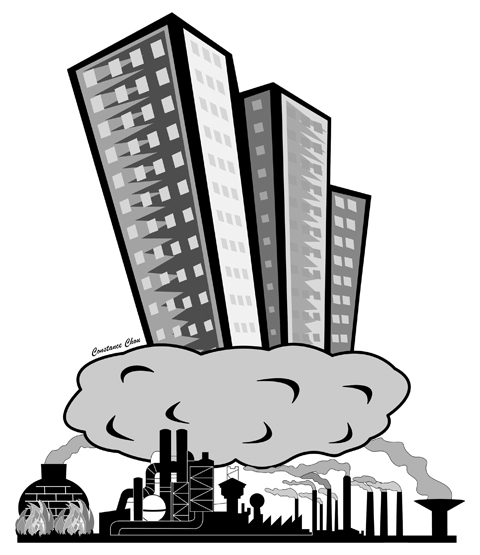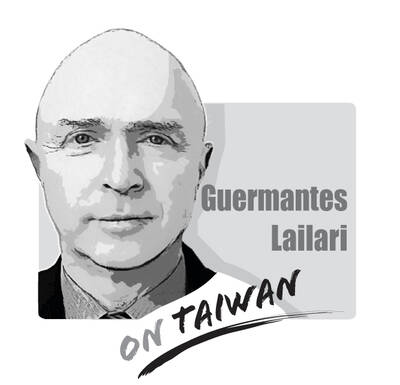To create what is being billed as one of the world’s most environmentally conscientious skyscrapers, the building’s developer, the Durst Organization, encouraged its architects to tap waste from some of the world’s dirtiest industries.
The concrete used at One Bryant Park, the angled 54-story tower that opened this year at 42nd Street and the Avenue of the Americas in Manhattan, used 45 percent less cement than would normally be used, replaced by slag from steel mills.
Concrete has existed since the public works of ancient Rome, when it was used to support aqueducts, and engineers love the material for its resilience in earthquakes and its utility in creating buildings of all shapes and sizes.

But as demand for concrete has soared, in part because of the rapid growth of cities in Asia, the environmental costs of the material are getting hard to ignore.
“Concrete is a terrific material, which is why it’s been used for 2,000 years,” said Tim Christ, an architect. “But it’s a very dirty material. The air-quality issues in China we observed during the Olympics derive from concrete construction.”
That’s because every tonne of new portland cement, the most common adhesive ingredient in concrete, releases roughly 1 tonne of greenhouse gases from the kilns that bake it.
The most potent way to reduce that toll is to replace some portland cement with recycled material. Coal ash from power plants and blast-furnace slag are the easiest substitutes to find — and they tend to make concrete more valuable than portland cement alone.
As often occurs with building techniques, the federal government gave this practice an early proving ground. It commissioned Christ’s firm, Morphosis, based in Santa Monica, California, and headed by Thom Mayne, the Pritzker Architecture Prize winner, to design the San Francisco Federal Building in 2001.
“We proposed a 50 percent slag replacement, where 15 percent was common,” said Christ of the building, which was completed last year, surprising critics and passers-by with an array of bends and overhangs.
Previously, use of such a high percentage of slag in the US had mainly been limited to relatively small projects without sophisticated specifications.
The process was also gaining credibility on the East Coast around the same time. The green-minded Durst Organization opened Four Times Square, the Conde Nast Building, in 1999 as a showcase for environmentally responsible techniques, recalled the company’s co-president, Jody Durst.
To that end, the developer specified using coal ash in the building’s columns. The company wanted to use as much recycled material as it could, Durst recalled, but the skeptical contractors limited its use to columns rather than floors.
The material held up so well there, however, that Durst also used slag for the Helena, a 600-unit apartment tower on West 57th Street in Manhattan, which opened in 2005.
By the end of that project, Durst said, contractors had come around.
“I think we paid a premium, but by the end of the job the contractor said he liked the way it handled,” Durst recalled. “The strength properties were superior.”
STANDARD PROCEDURE
The developer’s standard procedure now includes ordering slag or coal ash for concrete.
The two byproducts differ in availability and characteristics. Slag, which is left over in blast furnaces when steel is made, can make up more of the concrete mix than ash without requiring extra chemicals, but it is harder to obtain locally. Developers like to buy supplies locally to reduce travel times and to gain points in the Leadership in Energy and Environmental Design rating system, which certifies a building’s environmental friendliness. Slag also tends to have a lighter color than ash. Ash’s quality can vary more, but testing techniques now generally make it as reliable as slag.
Either material makes concrete stronger, said Christian Meyer, a civil engineering professor at Columbia, by reducing the effect of heat on the integrity of the concrete. Portland cement requires more water, and the resulting concrete may become hotter in warm weather and be more susceptible to cracking. It is also more likely to harden in a mixing truck while a driver sits in traffic on a hot day, making it impossible to pour at the construction site, said Bob Mannino of Pinnacle Construction, Durst’s concrete contractor at One Bryant Park.
Compared with portland cement, slag is denser and is up to 15 percent stronger, said Dave Weber, executive director of the Slag Cement Association.
“In mass concrete, for the base of a building, it can comprise up to 80 percent of the mix,” he said.
The stronger concrete helps developers meet big-city building codes, which now require higher strength to withstand potential terrorist attacks or disasters.
The Freedom Tower at ground zero of the Sept. 11, 2001, attacks and a nearby Forest City Ratner condominium, Beekman Tower, are among prominent developments using recycled material.
The greater solidity also lets developers make thinner walls, allowing for more rentable area, according to architect John Cetra. Cetra’s firm, Cetra/Ruddy, decided to use slag in a condominium building called One Madison Park, which is nearing completion on 23rd Street. Like Durst, he expects to use slag or ash in all urban projects from now on.
“It doesn’t add anything to the cost,” Cetra said. “And it’s used more and more in high-performance concrete, which we like using because it means the structure can be slimmed down a bit so we can conserve space.”
VERSATILITY
As more developers are recognizing the materials’ versatility, supply networks reaching from smelters and coal-fired power plants to concrete makers have been growing.
“Most electric utilities have an agreement with a marketer for storage in domes or silos, and on a daily basis trucks will come get it because the power plant needs to clear out the ash,” said Dave Goss, executive director of the American Coal Ash Association.
Utilities own ash and sell it to concrete mixing companies. Big concrete companies like France’s Lafarge and independent specialists also own and manage stocks of ash and slag, Goss said. There are several ways that such companies agree to sell, store and share profits from the material.
Growing demand for the recycled material has caused it to become costlier. With the US’ relatively few steel mills oversubscribed, said Meyer, some contractors are importing slag from Italy for their projects. Weber of the Slag Cement Association said trade groups and academics are working on developing “ternary blends” that mix slag, ash and other materials for lower transport and processing costs.
More research into concrete’s environmental cost will probably change the industry further in the next 10 years. Even if ash or slag cement become universal, concrete will exact a big toll on the environment, Meyer said, because up to three-quarters of it is aggregated sand or stone, which consumes lots of energy in production. Finding recycled material for aggregate will be the industry’s next challenge.
The most promising contender, Meyer said, is construction debris. At Denver International Airport, which opened in 1995, roadbeds contain concrete from the former Stapleton Airport, he said. So, depending on research into the strength of debris and its chemical reaction with other ingredients, concrete — a 2,000-year-old material — may soon involve recycling buildings that have been around for only a few decades.

George Santayana wrote: “Those who cannot remember the past are condemned to repeat it.” This article will help readers avoid repeating mistakes by examining four examples from the civil war between the Chinese Communist Party (CCP) forces and the Republic of China (ROC) forces that involved two city sieges and two island invasions. The city sieges compared are Changchun (May to October 1948) and Beiping (November 1948 to January 1949, renamed Beijing after its capture), and attempts to invade Kinmen (October 1949) and Hainan (April 1950). Comparing and contrasting these examples, we can learn how Taiwan may prevent a war with
Taiwan is rapidly accelerating toward becoming a “super-aged society” — moving at one of the fastest rates globally — with the proportion of elderly people in the population sharply rising. While the demographic shift of “fewer births than deaths” is no longer an anomaly, the nation’s legal framework and social customs appear stuck in the last century. Without adjustments, incidents like last month’s viral kicking incident on the Taipei MRT involving a 73-year-old woman would continue to proliferate, sowing seeds of generational distrust and conflict. The Senior Citizens Welfare Act (老人福利法), originally enacted in 1980 and revised multiple times, positions older
The Chinese Nationalist Party (KMT) has its chairperson election tomorrow. Although the party has long positioned itself as “China friendly,” the election is overshadowed by “an overwhelming wave of Chinese intervention.” The six candidates vying for the chair are former Taipei mayor Hau Lung-bin (郝龍斌), former lawmaker Cheng Li-wen (鄭麗文), Legislator Luo Chih-chiang (羅智強), Sun Yat-sen School president Chang Ya-chung (張亞中), former National Assembly representative Tsai Chih-hong (蔡志弘) and former Changhua County comissioner Zhuo Bo-yuan (卓伯源). While Cheng and Hau are front-runners in different surveys, Hau has complained of an online defamation campaign against him coming from accounts with foreign IP addresses,
Taiwan’s business-friendly environment and science parks designed to foster technology industries are the key elements of the nation’s winning chip formula, inspiring the US and other countries to try to replicate it. Representatives from US business groups — such as the Greater Phoenix Economic Council, and the Arizona-Taiwan Trade and Investment Office — in July visited the Hsinchu Science Park (新竹科學園區), home to Taiwan Semiconductor Manufacturing Co’s (TSMC) headquarters and its first fab. They showed great interest in creating similar science parks, with aims to build an extensive semiconductor chain suitable for the US, with chip designing, packaging and manufacturing. The